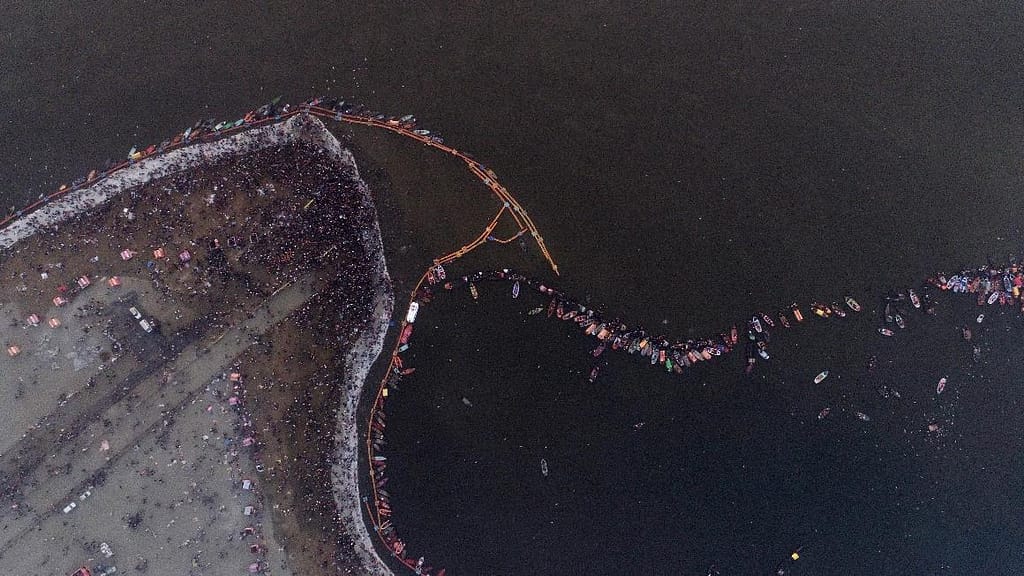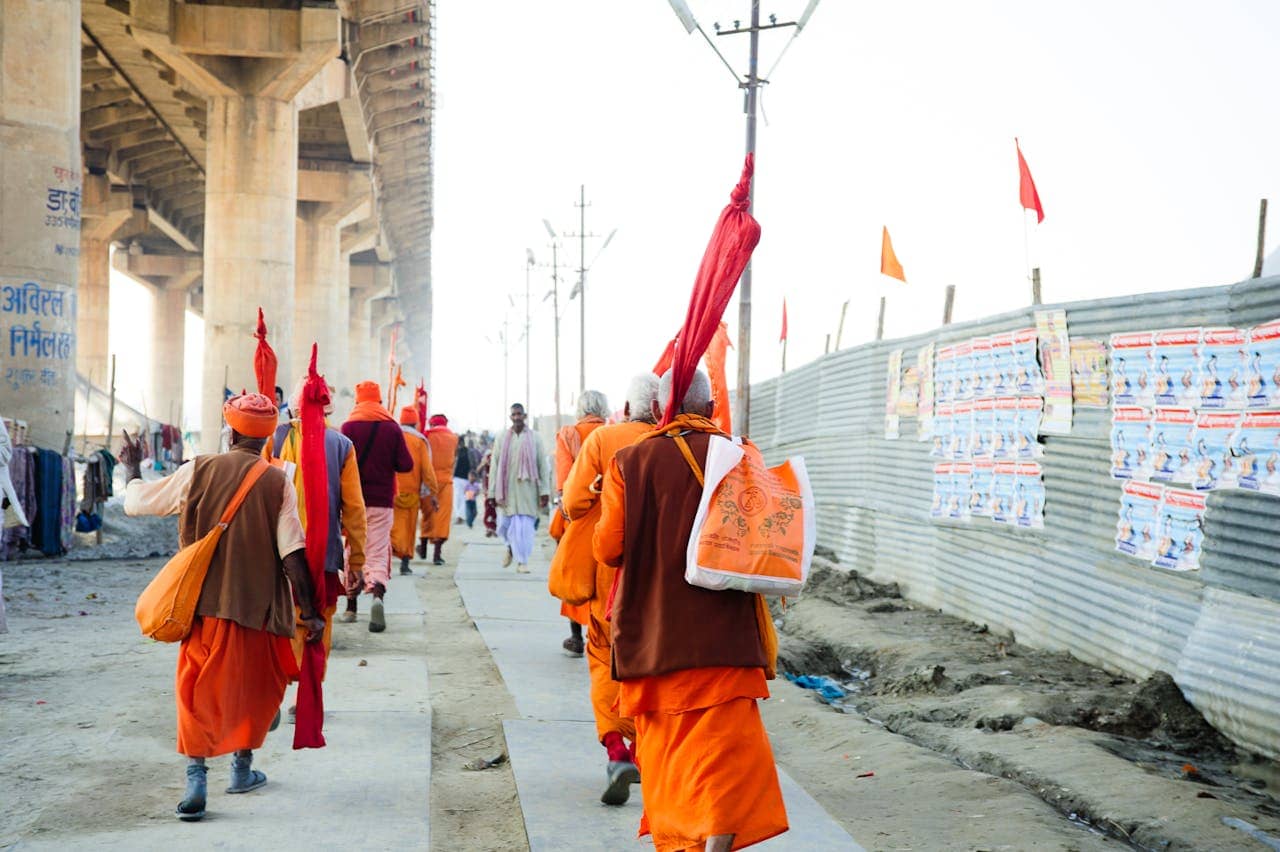At the heart of the Kumbh Mela experience lies the sacred act of ritual bathing in the holy rivers. For countless pilgrims, taking a dip in the confluence, especially during the most auspicious bathing dates, is the culmination of their spiritual journey, a powerful act steeped in symbolism and the fervent pursuit of blessings, purification, and liberation.
Seeking Blessings: The Power of the Triveni Sangam
The Kumbh Mela in Prayagraj (Allahabad) derives special sanctity from its location at the Triveni Sangam, the confluence of three sacred rivers: the Ganges, the Yamuna, and the mythical Saraswati. Hindus believe that these waters, infused with the essence of the Amrit during the legendary churning of the ocean, possess extraordinary purifying properties.
By immersing themselves in the Triveni Sangam, pilgrims seek:
- Washing Away Sins: It’s believed that taking a holy dip washes away accumulated negative karma and past sins, paving the path for spiritual renewal.
- Spiritual Progress: The act of bathing is seen as an external manifestation of an internal desire for purification. It symbolizes a commitment to abandoning negative traits and cultivating positive qualities.
- Moksha: The Ultimate Goal: For many devout pilgrims, the Kumbh Mela bath is intricately linked with the ultimate spiritual aspiration of Moksha – liberation from the cycle of birth, death, and rebirth.
- Blessings and Auspiciousness: Devotees seek blessings for health, well-being, fulfillment of desires, and overall spiritual upliftment.
Ritual Sequence: The Transformative Process
While there may be slight variations among individuals or specific lineages, here’s a general outline of the central rituals pilgrims typically follow during their holy dip:
- Sankalp (Sacred Vow): Before entering the waters, pilgrims take a moment for Sankalp. They clearly state their intention for taking the bath – whether it’s seeking forgiveness, pursuing spiritual goals, or offering prayers for the well-being of themselves and their loved ones.
- Offering Prayers: Devotees commonly offer prayers and salutations to the sacred rivers, the presiding deities, and their personal Gurus or spiritual lineages. They might chant mantras or recite devotional hymns.
- Guided Dips: Pilgrims usually take a series of dips in the water, often three or more. They might be assisted by a priest or volunteer to ensure safety due to the water currents. With each immersion, they symbolically wash away impurities.
- Donation and Offerings: After completing the bathing ritual, many pilgrims offer donations (Dakshina) to priests or make charitable contributions. Offerings of flowers, sweets, or fruits to the river deity are also common practices as a way to show gratitude.
Variations Among Traditions: Respecting Diversity
The Kumbh Mela brings together a multitude of Hindu denominations and ascetic orders. While the core belief in the purifying power of the holy bath remains consistent, specific Akharas might incorporate additional elements within their rituals:
- Processions: The grand Shahi Snan processions of the various Akharas often culminate in ritualistic bathing led by their revered saints and Mahants.
- Elaborate Pujas and Offerings: Some Akharas might perform more elaborate Pujas (worship rituals) or make specific offerings at the river bank before or after bathing.
- Initiation Ceremonies: The Kumbh Mela is an occasion where some ascetic orders initiate new members. These initiations may involve specific bathing rituals as a symbolic act of purification, renunciation, and adoption into the spiritual lineage.
The Essence of the Holy Dip
The act of taking a holy dip during the Kumbh Mela transcends an ordinary bath. It’s a symbolic act of cleansing, a renewal of faith, and a reaffirmation of the human yearning for spiritual upliftment.
Whether one approaches it with simple devotion or as part of a more elaborate set of rituals, the immersion into the sacred waters, charged by the collective faith of millions of pilgrims, is a transformative experience that leaves an enduring mark on the seeker’s soul.


